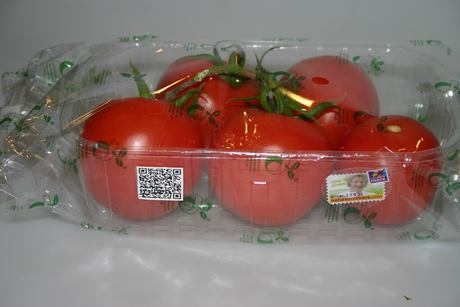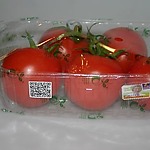Recently supermarkets are focusing on selling biological products, on the one hand because they want to be responsible for the earth (or at least to suggest they are) and on the other hand because there is a demand from the consumer side. However, these products – for example biological tomatoes – are sold with a packaging. These tomatoes would not be really biological without a sustainable packaging, so bioplastics were introduced to solve this issue (one could wonder why these products are even sold with a packaging at all, but that will not be the point of this column). After enjoying the biological tomatoes, and having a good feeling about this because you ate ‘something good’ (for yourself and the earth), a dilemma will (hopefully) arise: how should I dispose this bioplastic packaging?
Well, the answer is that there is not really an answer. At least not in the case if you want to dispose the bioplastic in a sustainable way. The name ‘bioplastic’ suggests that it is biodegradable, however this is not the case. Bioplastic is made of natural materials, for example PLA is made out of corn, that is where the ‘bio’ comes from. Nevertheless, bioplastics are industrial compostable, this means that in theory it could be disposed with the green waste. In practice this is different because the time to industrially compost a bioplastic is much longer than for example the tomatoes that also could have ended up with the same green waste. Therefore the bioplastics are still intact after the composting process and they will be collected and incinerated after all, just like the residual waste streams. [1][2][3]
I mentioned that the dilemma ‘hopefully’ would arise, because most people probably will not even be aware of this dilemma. I guess that most people will dispose the bioplastic with the plastic waste. This sounds like a logical decision; bioplastic is not much distinguishable from ‘normal’ plastic, except for the small icon on the packaging (‘kiemplantlogo’ or ‘OK-Compost’). However, the worst way to dispose the bioplastic is with the plastic waste. Bioplastic in the plastic waste stream cannot be filtered out; in this way the bioplastic does negatively influence the properties of the recycled plastic. Thus the disposal of bioplastics with the green or the residual waste is preferred over the disposal with the plastic waste. Via the green and residual waste the bioplastic will be incinerated and in this way at least biogas is generated. [1][2][3]
With this case I want to illustrate and question the sustainable innovation of bioplastics. It could be regarded as a socio-technical system; the bioplastic is the technical artifact, and a lot of people in society do interact with this in their daily life – when buying the biological tomatoes – maybe without even being aware of it. For social-technical systems the acceptability is often a challenge, however I wonder if the bioplastics were not accepted too easily within society? Did supermarkets implement the bioplastics not just for their own benefit - to be regarded as ‘sustainable’ and gain competitive advantage? Were the developers of the bioplastics too happy that the supermarkets where willing to implement the bioplastics as packaging, without thinking how the material would be disposed? Isn’t it very contradicting that a material that looks like plastic cannot be disposed with the plastic waste?
I think there are a lot of challenges to improve the bioplastics. One example is the perception by the consumer. The consumer should become aware of the fact that they buy and use a bioplastic in the first place, and subsequently become aware of the right way to dispose it. The responsibility should not lie with the consumer, but with the packaging designer, the supermarket and/or the developer of the material. Communication is key. Besides this the waste collection plays an important role here. And not to forget about the logistics problems that come along with this. The list of examples for improvement could continue... To conclude, there lies a great challenge to improve the bioplastics in order to become a real sustainable innovation.
[1] Milieu Centraal (no date) Composteerbaar plastic [online] Available from: http://www.milieucentraal.nl/afval/verpakkingen/composteerbaar-plastic/ (accessed on the 14th of November 2015)
[2] Keuringsdienst van Waarde (09-03-2011) Bio-afbreekbaar [online] Available from: http://keuringsdienstvanwaarde.kro.nl/seizoenen/2011/30-39075-09-03-2011(accessed on the 14th of November 2015)
[3] Morssink, R. (02-07-2013) Bio-plastic: composthoop of prullenbak? One World Magazine [online] Available from: https://www.oneworld.nl/groen/bio-plastic-composthoop-prullenbak (accessed on the 14th of November 2015)


